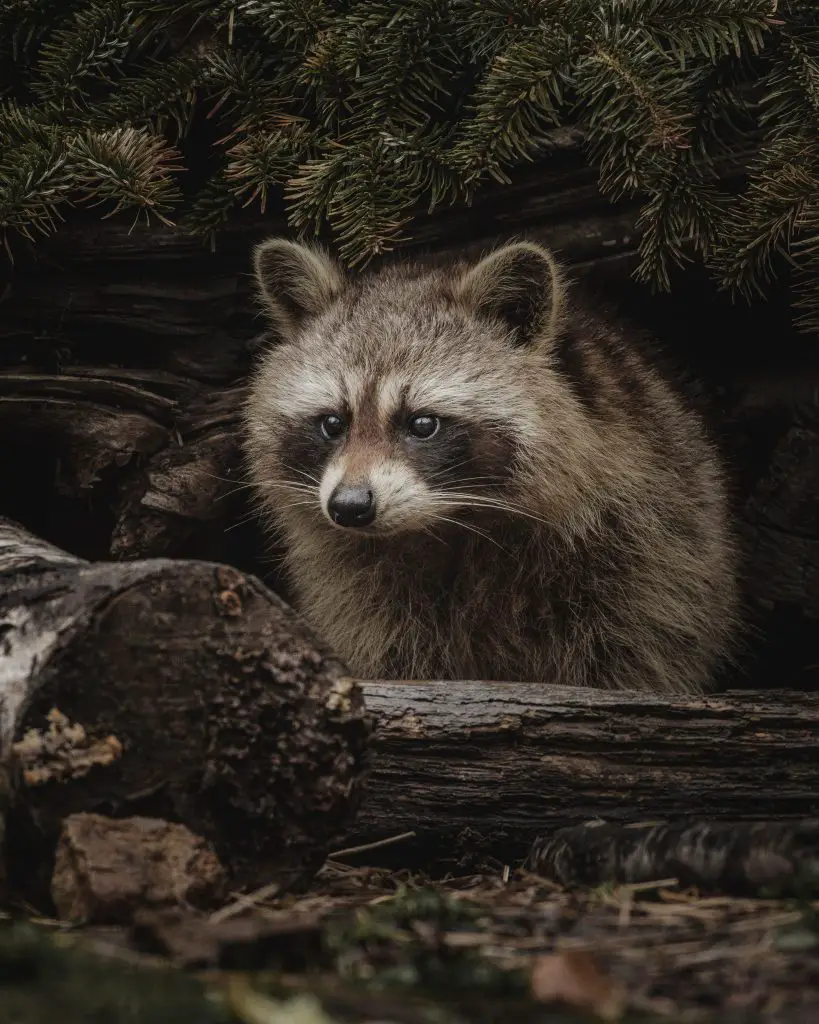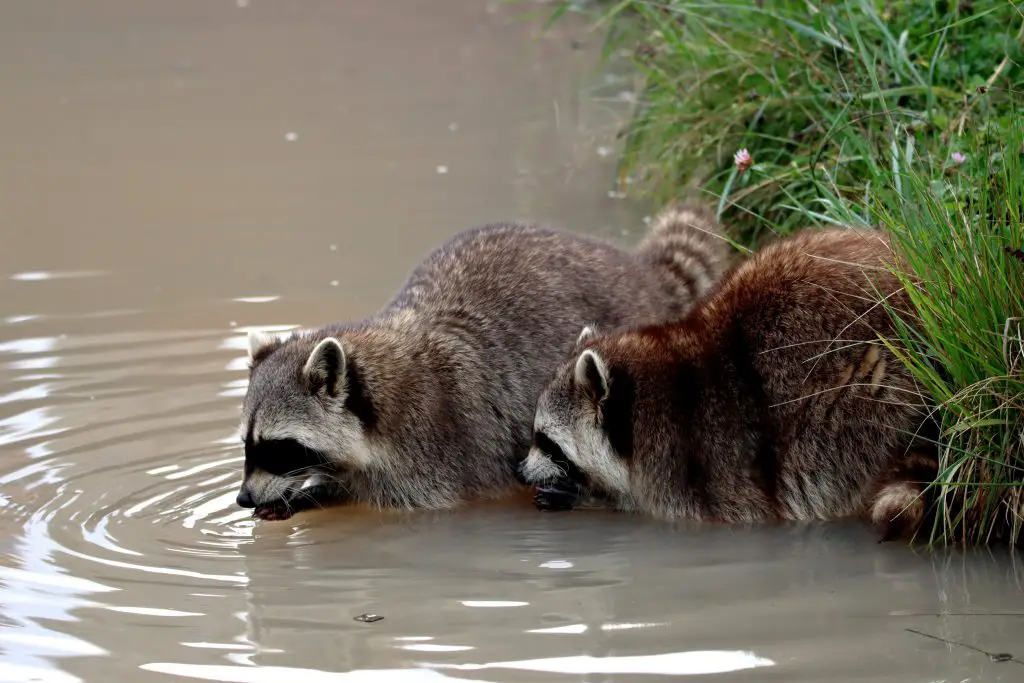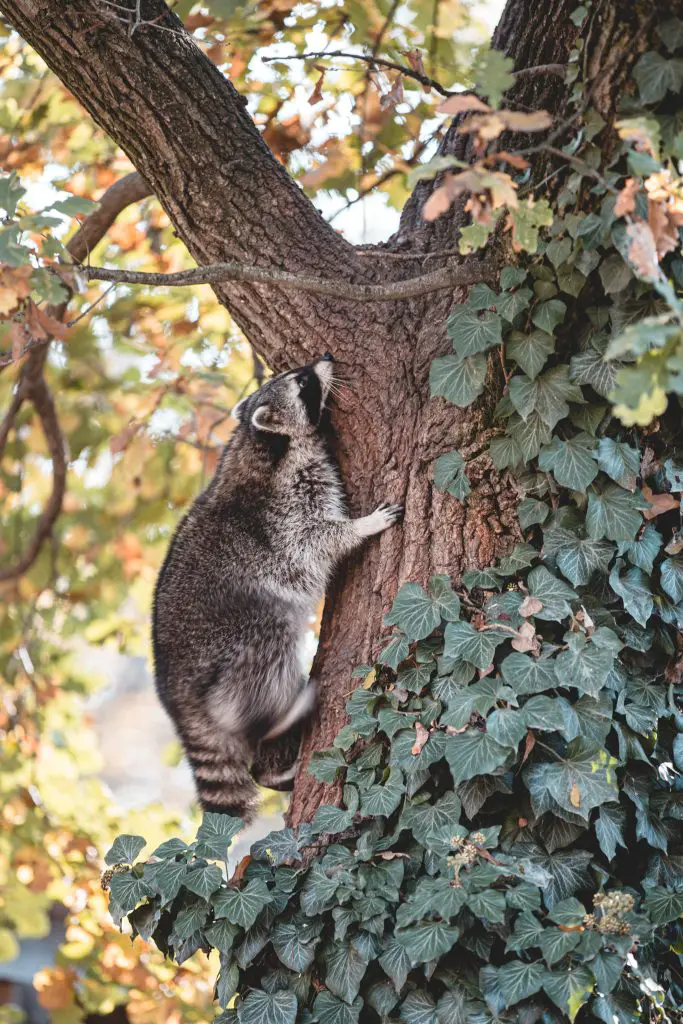If you’ve ever asked yourself “how much does a raccoon pelt sell for?” then this blog post is for you. Fur buyers, trappers, and wildlife enthusiasts all have an interest in the value of wild fur pelts such as those from raccoons. Prices can vary significantly depending on several factors including type of pelt, quality, seasonality and more. In this article we will discuss different types of raccoon pelts available to buy or sell as well as how to skin and prepare them for sale. We’ll also explore where to find buyers or sellers along with any regulations that might be involved when it comes to trapping and selling furs like those from a raccoon. So if you want answers about how much does a raccoon pelt sell for – keep reading!

Types of Raccoon Pelts
Raccoon pelts are a popular choice for fur traders and hunters alike. There are three main types of raccoon pelts available on the market: wild, farm-raised, and hybrid.
Wild Raccoon Pelts: Wild raccoon pelts come from animals that have been trapped in their natural habitats. These pelt usually have more character than those from other sources due to the unique markings and coloration found in wild animals. The quality of these pelt can vary greatly depending on the age and health of the animal when it was harvested as well as how it was handled after being skinned.
Farm-Raised Raccoon Pelts: Farm-raised raccoon pelts come from animals that were raised specifically for their fur. These pelt tend to be more uniform in size, shape, and color than those taken from wild populations due to selective breeding practices used by farmers who raise them for their fur. They also tend to be higher quality overall since they were raised under controlled conditions with access to food, water, shelter, etc., which allowed them to reach maturity before being harvested for their fur.
Hybrid raccoon pelts are becoming increasingly popular among fur traders as they combine the best qualities of two different species or subspecies of raccoons. This type of pelt offers a superior product compared to either parent breed alone, with increased softness and durability, larger size, and better coloring/markings.
Raccoon pelts come in a variety of types, from wild to farm-raised and even hybrid. The type of pelt will determine the price you can expect when selling it, so understanding the differences between them is important for hunters looking to maximize their profits. Next, we’ll look at how much each type of raccoon pelt typically sells for.
Factors Affecting the Price of a Raccoon Pelt
The quality of a raccoon pelt is one of the main factors that affects its market price. The better the condition and texture of the fur, the higher its value will be. For example, if there are no bald spots or tears in the fur, it will fetch a higher price than a damaged pelt. Additionally, if the fur has been properly tanned and treated to preserve its softness and coloration, it can command an even higher price from buyers.
Supply and demand also play an important role in determining how much money a raccoon pelt is worth. If there is high demand for pelts due to fashion trends or other reasons but limited supply available on the market, then prices tend to increase as buyers compete with each other for scarce resources. On the other hand, when supply exceeds demand due to over-trapping or poor weather conditions that reduce animal populations in certain areas, you can expect low prices until equilibrium between supply and demand is restored.
Seasonality can also influence the pricing of raccoon pelts, depending on when they were harvested or collected by trappers, hunters, and fur harvesters. Generally speaking, winter months tend to have higher average price as this is when most animals have their thickest coats which make them more desirable for use in clothing items such as hats and scarves. However, summer months may still offer good opportunities for selling pelts at reasonable rates since some people prefer lighter weight garments during warmer seasons like spring and summertime too.
The quality of the pelt, supply and demand, and seasonality of fur prices all have a direct impact on the price of a raccoon pelt. Next we’ll look at how to prepare your own raccoon pelts for sale.

How to Skin and Prepare a Raccoon Pelt?
Skinning and preparing a raccoon pelt can be a rewarding experience for any hunter or trapper. It is important to understand the necessary tools and supplies needed in order to properly skin and prepare the pelt.
Necessary Tools and Supplies for Skinning and Preparing the Pelt: In order to successfully skin and prepare a raccoon pelt, you will need several items including sharp knives, pliers, scissors, tweezers, needle-nose pliers, salt (or other curing agent), water buckets/containers, rubber gloves (optional) as well as an area with good ventilation.
Step-by-Step Guide on Skinning and Preparing the Pelt: The first step in skinning a raccoon is removing its head from its body by cutting through the neck vertebrae using either your knife or scissors. Once this has been done it’s time to begin fleshing out the hide which involves scraping away all of the fat tissue that remains attached to it with your knife or pliers.
After this process is complete you should rinse off any remaining flesh residue with cold water before salting down both sides of your hide evenly until it appears damp but not wet.
Finally let your hide dry completely before storing it in an airtight container such as a plastic bag or vacuum sealed pouch.
When curing your hide, make sure that you use enough salt so that there are no visible areas left uncovered. However, be careful not to overdo it as too much salt can cause damage.
Additionally, when storing your cured hides, make sure they are kept away from direct sunlight as UV exposure could reduce their value significantly if sold later on down the line.
Properly skinning and preparing a raccoon pelt requires skill, knowledge, and the right tools. With these tips in mind, you can now move on to learn how much your raccoon pelt is worth.
Where to Buy or Sell a Raccoon Pelt?
Fur Harvesters Auction (FHA) is a Canadian-based organization that provides an online marketplace for buyers and sellers of wild animal furs. FHA offers auctions throughout the year, with each auction featuring hundreds of lots of different types of fur pelts from various species. Buyers can bid on individual lots or purchase them outright, while sellers can list their pelts in advance to ensure they get the best price possible. The advantage for both buyers and sellers is that FHA provides a secure platform where all transactions are tracked and monitored to ensure fairness and transparency. First time sellers may want to look into this option as it’s a vetted process.
Local Fur Dealers/Tagging Stations provide another option for buying or selling raccoon pelts. These dealers typically have physical stores located in areas where trapping is popular, such as rural communities or small towns. They may also offer tagging services, which involve attaching tags to each pelt so it can be identified by authorities if necessary. Local fur dealers often have access to high-quality pelts at competitive prices due to their close relationships with trappers in the area. They also generally have many relationships with local buyers and can arrange great deals for both parties.
Online marketplaces, auctions, and classifieds ads are becoming increasingly popular options for buying and selling raccoon pelts as well as other types of wildlife furs. eBay is a great example of an online marketplace that allows buyers and sellers from around the world to connect with one another without having to physically meet up in person; this makes it easier than ever before for people looking for specific items like raccoon pelts or even rarer specimens such as bobcat skins, wild mink or otter pelts. Online sales are a great method to sell your hard-earned skinned furs to someone looking to make some awesome fur hats.
Additionally, classifieds ads websites such as Craigslist provide an easy way for individuals who want to buy or sell a pelt locally without having to go through a third party service provider like FHA or local fur dealerships/tagging stations.
Whether you are looking to buy or sell a raccoon pelt, there are several options available. From the Fur Harvesters Auction (FHA) and local fur dealers/tagging stations to online marketplaces/auctions/classifieds ads, it’s important to understand the pros and cons of each option before making a decision. Let’s now look at how much a raccoon pelt typically sells for.

Regulations Regarding Trapping, Selling, and Buying of Raccoon Pelts
When it comes to trapping, selling, and buying of raccoon pelts, there are certain regulations that must be followed. Depending on the state you live in or plan to trap in, licensing requirements for trapping/harvesting wild animals may vary. It is important to research your local laws before engaging in any type of fur harvesting activity. And of course, hunting any private lands come with more restrictions in that you must get permission to hunt rather that public land available to all. The good news is that most, if not all states, have wildlife management areas that are great resources for hunters and trappers.
Licensing Requirements for Trapping/Harvesting Wild Animals in Your State: In most states, a valid trapping license is required to legally harvest wildlife such as raccoons. Additionally, some states require a separate permit specifically for furbearers like raccoons which can be obtained from the local Department of Natural Resources (DNR). Furthermore, some states have specific season dates when furbearer trapping is allowed and other restrictions that must be adhered to while harvesting furs. It’s important to check with your local DNR office prior to engaging in any kind of trapping activities so you know what’s legal and what isn’t.
Laws Regarding Selling or Buying Wild Animal Furs in Your State: Each state has its own set of laws regarding the sale and purchase of wild animal furs within their borders. Generally speaking though it’s illegal to sell raw hides without proper documentation proving they were harvested legally by someone with a valid hunting license or permit issued by the DNR office responsible for managing wildlife resources within that particular state. Some states also require all buyers and sellers involved with trading wild animal furs register with them prior to engaging in any kind of commercial transactions involving these items as well as obtain an appropriate tag from a tagging station before transporting raw hides across state lines into another jurisdiction where different rules may apply concerning this matter.
Internationally, for non-endangered species like raccoons whose populations remain relatively stable throughout much of North America according to estimates provided by governmental agencies responsible for monitoring these matters, no international treaty exists governing trade between two countries. Even so, both parties should still take necessary precautions when dealing with each other since many nations have their own individual laws concerning importation/exportation which could potentially complicate matters depending on the circumstances surrounding the transaction.
It is important to be aware of the regulations surrounding trapping, selling and buying raccoon pelts in order to stay compliant with local and international laws. Now let’s look at the licensing requirements for trapping/harvesting wild animals in your state.
FAQs in Relation to How Much Does a Raccoon Pelt Sell For?
Fur prices for 2023 are difficult to predict with certainty due to a variety of factors, including global demand and the availability of raw materials. However, it is likely that fur prices will remain relatively stable or even increase slightly in comparison to 2023 levels. Factors such as rising incomes in developing countries and increased demand from luxury markets could contribute to an overall rise in fur prices. Additionally, advances in technology have allowed for more efficient production processes which may also lead to higher fur prices. Ultimately, the exact fur prices for 2023 will depend on a variety of factors and can only be determined closer to the year.
The price of a raccoon hide can vary greatly depending on the size, quality, and condition of the hide. Generally speaking, you can expect to sell a raccoon hide for anywhere between $10 and $50. However, some hides may be worth more or less than this range depending on their individual characteristics. Additionally, factors such as location and demand may also influence how much you can get for your hide.
The price of bobcat pelts varies greatly depending on the quality and size of the pelt. Generally, an average-sized prime pelt can sell for anywhere between $50 to $150. However, prices may be higher or lower depending on factors such as location, seasonality, and demand. In some cases, a large prime pelt could fetch up to $300 or more. It is important to note that prices are also affected by the fur market in general which fluctuates regularly.
Beaver pelts typically sell for around $10 to $20 USD per pelt. Prices can vary depending on the quality of the fur, with higher-grade pelts fetching more money. The demand for beaver pelts also affects prices, as does the season when they are harvested. Generally speaking, winter is considered the best time to harvest beaver pelts due to their thicker fur during this period.
Conclusion
In conclusion, much does a raccoon pelt sell for depends on many factors such as the type of pelt, its quality and size. Knowing where to buy or sell a raccoon pelt is also important in determining the price. Additionally, understanding how to skin and prepare a raccoon pelt properly is essential in order to maximize profits from selling it. Lastly, it’s important to be aware of regulations regarding trapping, selling and buying of raccoon pelts so that you can remain compliant with local laws. With all these considerations taken into account, you should have no problem finding out exactly how much does a raccoon pelt sell for!

Leave a Reply